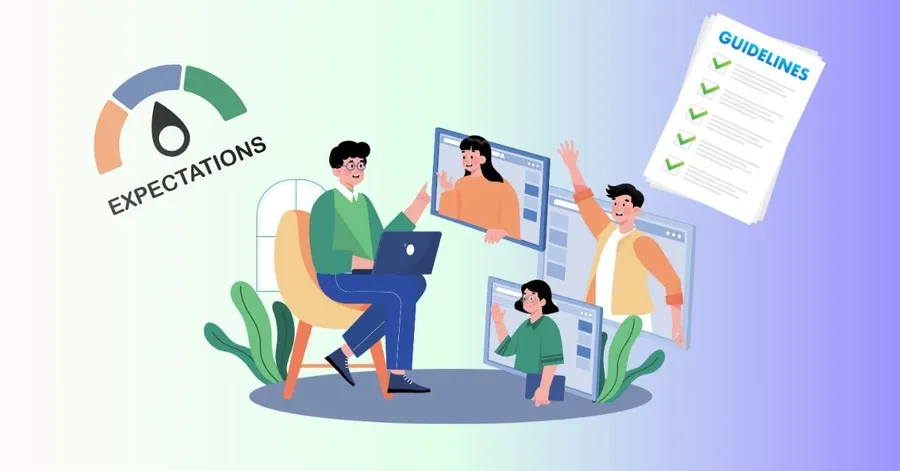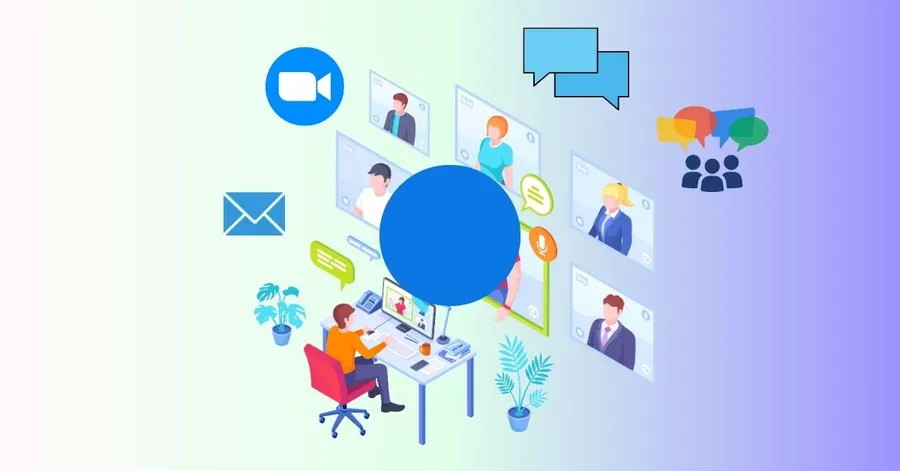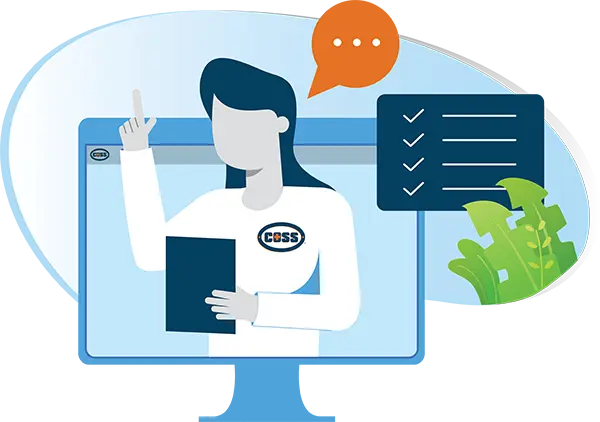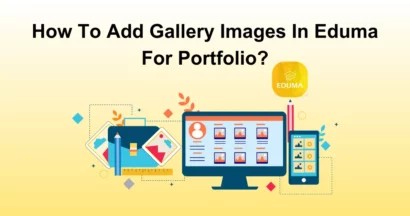Online learning has become increasingly popular, offering flexibility and accessibility to students worldwide.
However, the lack of face-to-face interaction in online environments can present unique challenges for effective communication.
Clear, consistent, and engaging communication between instructors and students is essential to ensure a successful online learning experience.
This blog post will explore valuable tips for fostering effective communication with online students and creating a supportive and productive virtual classroom.
Let’s get started!
Eduma – Education WordPress Theme
We provide an amazing WordPress theme with fast and responsive designs. Let’s find out!
Why is Effective Communication with Online Students Important?
Effective communication with online students is crucial for successful teaching and learning, which is characterized by limited face-to-face interaction.
Clear, consistent, and engaging communication bridges the gap between instructors and students, fostering a sense of connection and support.
Here’s why prioritizing effective communication with online students is essential:
Enhanced Student Learning
Clear expectations, prompt feedback, and readily available support contribute to a deeper understanding of course material and improved academic performance.
Increased Student Engagement
Interactive communication methods and a responsive instructor can motivate students to actively participate in discussions, collaborate with peers, and take ownership of their learning.
Stronger Instructor-Student Relationships
Open communication channels and a supportive online presence build rapport and trust between instructors and students, leading to a more positive and productive learning experience.
Reduced Misunderstandings and Frustration
Clear guidelines, timely responses, and diverse communication channels minimize confusion, address concerns promptly, and prevent potential frustration for both students and instructors.
Greater Flexibility and Accessibility
Effective online communication accommodates diverse learning styles, schedules, and needs, making education more accessible and inclusive for all students.
5 Best Tips for Effective Communication with Online Students
1. Establish Clear Expectations and Guidelines

From the outset, setting clear expectations is crucial for effective communication with online students.
This provides a framework for interaction, clarifies responsibilities, and minimizes confusion.
Here’s how to establish clear expectations:
Detailed Syllabus
A comprehensive syllabus serves as a roadmap for the course.
Include essential information such as learning objectives, assignment deadlines, grading criteria, late submission policies, and communication protocols.
Make sure to highlight the preferred methods for contacting you and expected response times.
Netiquette Guidelines
Online discussions require a specific set of etiquette guidelines to ensure respectful and productive interactions.
Clearly outline expectations for online communication, including acceptable language, constructive feedback, and appropriate online behavior.
Emphasize the importance of active participation and respectful engagement with peers.
Communication Protocols
Specify the preferred channels for different types of communication.
For instance, use the learning management system (LMS) for announcements and general questions, email for private inquiries, and video conferencing for live sessions or office hours.
2. Provide Diverse Communication Channels

Online students have diverse learning styles, preferences, and needs.
Offering a variety of communication channels caters to this diversity and ensures that students can access information and support in ways that work best for them.
Consider these options:
Learning Management System (LMS)
Utilize the features within your LMS to facilitate communication.
Post announcements in the forum, send emails to individuals or the entire class and use the messaging function for quick questions or reminders.
Video Conferencing
Schedule regular video conferencing sessions for live lectures, Q&A sessions, or virtual office hours.
This allows for real-time interaction, fostering a sense of connection and providing opportunities for immediate feedback.
Tools like Zoom, Google Meet, or Microsoft Teams offer robust features for online meetings and webinars.
Discussion Forums
Create dedicated forums for specific topics, group projects, or general questions. Encourage students to engage in peer-to-peer learning, share insights, and build community.
Actively participate in these forums to guide discussions, answer questions, and provide feedback.
While not ideal for lengthy discussions, email remains a valuable tool for private communication, sharing resources, and providing personalized feedback.
Encourage students to use email for individual inquiries or concerns that require confidentiality.
Instant Messaging
For quick questions or informal check-ins, consider using instant messaging platforms like Slack or Discord.
These tools can facilitate real-time communication and foster a sense of immediacy.
3. Make Communication Engaging and Interactive

Students need online communication to be engaging and stimulating in order to stay interested and participate actively when they can’t interact face-to-face.
Here are some strategies to enhance engagement:
Multimedia Content
Incorporate various multimedia elements into your online lessons and communications.
Use videos, images, audio recordings, and interactive simulations to cater to different learning styles and make the content more dynamic.
Personalized Feedback
Provide timely and constructive feedback on assignments, using a mix of text comments, audio feedback, or video explanations.
Personalized feedback demonstrates your investment in student learning and encourages continuous improvement.
Interactive Activities
Utilize polls, quizzes, online games, and collaborative activities to encourage active participation and make learning more fun.
These activities break up the monotony of text-based communication and promote active learning.
Gamification
Incorporate elements of game design into your online course, such as points, badges, leaderboards, and challenges.
Gamification can motivate students, increase engagement, and foster a sense of friendly competition.
Storytelling
Use storytelling techniques to make your online lessons more memorable and relatable.
Share anecdotes, case studies, or real-world examples to illustrate concepts and connect with students on a personal level.
4. Foster a Sense of Community

One of the challenges of online learning is the potential for isolation and disconnection.
Actively foster a sense of community to combat this and create a more supportive and collaborative learning environment.
Here’s how:
Icebreaker Activities
At the beginning of the course, use icebreaker activities to encourage students to introduce themselves, share their interests, and get to know each other.
This helps to break down barriers and build rapport among students.
Group Projects
Assign group projects that require collaboration and communication, promoting teamwork and peer learning.
Provide clear guidelines and support for group work, and encourage students to use online tools for communication and collaboration.
Virtual Social Events
Organize optional virtual social events, such as online coffee breaks, movie nights, or study groups, to foster camaraderie and a sense of belonging.
These informal gatherings provide opportunities for students to connect outside of the academic context.
Online Discussion Forums
Encourage active participation in online discussion forums by posing thought-provoking questions, facilitating debates, and providing regular feedback.
Create a welcoming and inclusive online space where students feel comfortable sharing their ideas and perspectives.
Peer Support
Encourage students to support each other by creating peer mentoring programs or study groups.
Facilitate opportunities for students to connect and learn from each other.
5. Be Present and Approachable

In the online environment, your presence as an instructor is crucial for establishing trust, providing support, and encouraging student engagement.
Here’s how to be present and approachable:
Regular Check-Ins
Actively participate in online discussions, respond to student inquiries promptly, and provide regular updates or announcements.
Consistent communication demonstrates your commitment to student success and creates a sense of presence in the online classroom.
Virtual Office Hours
Dedicate specific times for virtual office hours where students can drop in or schedule one-on-one meetings to ask questions or discuss concerns.
This provides a dedicated space for individualized support and guidance.
Empathy and Understanding
Be mindful of the challenges online students may face, such as time management, technical difficulties, or personal circumstances.
Show empathy and understanding in your communication, offering support and flexibility when needed.
Prompt and Consistent Communication
Respond to student inquiries within a reasonable timeframe, ideally within 24 hours.
Consistent and timely communication builds trust and shows students that you value their time and questions.
Open and Welcoming Tone
Use a friendly and approachable tone in your online communications.
Encourage questions, feedback, and open dialogue. Create a safe space for students to express themselves without fear of judgment.
Using LearnPress to Communicate with Online Students
LearnPress, our comprehensive WordPress LMS plugin, offers several add-ons that enhance interaction and communication in online courses.
Among these, the Live Course Add-on and the Announcement Add-on provide instructors with versatile tools to keep students connected, informed, and motivated throughout their learning journey.
Live Course Add-on for LearnPress
The Live Course Add-on brings real-time interaction to your online courses.
This feature allows instructors to host live sessions directly within the LearnPress environment, helping bridge the gap between in-person and online learning.
Key benefits include:
Real-Time Engagement
Instructors can interact with students through live video or audio, making it easier to answer questions, discuss complex topics, and offer immediate feedback.
This helps to maintain a classroom-like experience, enhancing student understanding and connection.
Interactive Features
The Live Course Add-on supports interactive tools like chat, polls, and Q&A sessions, which boost engagement and encourage active participation.
This makes it easier for students to stay involved and for instructors to gauge student comprehension in real-time.
Scheduling Flexibility
The add-on includes options for scheduling sessions, allowing instructors to set regular live meetings, office hours, or special review sessions.
Students can plan accordingly and participate actively, fostering a consistent learning routine.
Announcement Add-on for LearnPress
The Announcement Add-on enables instructors to send timely updates and reminders, ensuring students are always informed of important course developments.
Here’s how it supports effective communication:
Course-Wide Announcements
With this add-on, instructors can send announcements visible to all enrolled students, ensuring they receive crucial information, such as upcoming assignments, schedule changes, or important reminders.
This centralized communication helps students stay organized and reduces missed messages.
Targeted Notifications
Announcements can be customized based on student groups or course sections, making it possible to tailor messages to specific audiences within a course.
This personalization helps keep communication relevant and ensures that students receive information that’s directly applicable to them.
Instant Alerts
Announcements appear as notifications within the student dashboard, making them hard to miss.
Students are notified instantly of new messages, which can improve response times and overall course engagement.
By leveraging the Live Course and Announcement Add-ons within LearnPress, instructors can foster a more interactive and supportive online learning environment.
Also, if you are still wondering about the retail price of these two add-ons, don’t worry. If you buy Eduma – an education WordPress theme designed specifically for LearnPress, you will get 21 LearnPress Add-ons included including Live Course and Announcement Add-on. Check out Eduma at ThemeForest.
In Conclusion
Effective communication with online students is essential for creating a positive and productive learning experience.
Hopefully, you can enhance student learning, increase engagement, and build strong relationships in the online classroom by establishing clear expectations, providing diverse communication channels, making communication engaging, fostering a sense of community, and being present and approachable.
Read More: How to Interact with Students in Online Courses?
Contact US | ThimPress:
Website: https://thimpress.com/
Fanpage: https://www.facebook.com/ThimPress
YouTube: https://www.youtube.com/c/ThimPressDesign
Twitter (X): https://twitter.com/thimpress


